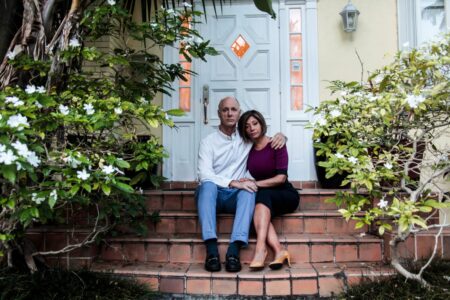Childhood Cancer Awareness & U.S. Trends in Childrens’ Cancer

September is childhood cancer awareness month, bringing up many conversations about the types of cancer that affect children and their families.
According to the American Childhood Cancer Organization, “In the U.S., 15,780 children under the age of 21 are diagnosed with cancer every year”.
With that number of children and families impacted every year, there are many stories based on experiences that can help raise awareness of symptoms to look for, the types of cancers that affect children, coping strategies for families, plus stories can help spark action in terms of research fundraising.
This story comes from a family who is questioning the role that carcinogenic environmental toxicants have in the rise of childhood cancers in the United States.
Families Seek Answers For US Rise in Childhood Cancers
Source: theguardian.com
Parents whose children have died from cancer are teaming up with scientists to study any correlation between toxicants and illness.
Soccer was a huge passion in Oliver Strong’s young life. Right up to his death from acute myeloid leukemia in June 2015 at the age of 12, he was a standout athlete and goalkeeper, a healthy, vibrant and popular boy with a zest for living that inspired his teammates, friends and family.
So when Oliver died suddenly at a Miami children’s hospital, just 36 hours after doctors first diagnosed the disease, his parents Simon and Vilma started looking for answers. What they found was disturbing.
Cases of pediatric cancer in the United States surged by almost 50% from 1975 to 2015, according to alarming but under-reported statistics by the National Cancer Institute, and in 2018 up to 16,000 children from birth to age 19 will have received a new diagnosis.
Yet what really elevated the disquiet of Oliver’s parents was increasing concern over the role that carcinogenic environmental toxicants, including industrial waste and pollutants, were believed to be playing in the rise of childhood cancer.
“There’s almost an unspoken scientific consensus that it’s always environmental,” said Simon Strong, who with his wife set up Oliver Forever Strong – a foundation in their son’s memory.
Oliver’s Forever Strong has now teamed up for an ambitious research study with scientists at the Texas Children’s Hospital, home to the nation’s largest pediatric cancer center, and the Baylor College of Medicine.
Through the website thereasonswhy.us, the study will harness social media to help collate information from a wide geographical spread. Families with their own experiences of childhood cancers will sign up and receive a questionnaire in the coming months seeking information including the manifestation and progression of their cancers as well as demographics.
Dr Michael Scheurer, director of the childhood cancer epidemiology and prevention program at Texas Children’s Hospital, said: “[This research] … will allow families who might not live near one of the existing study centers to participate as they are comfortable.
“We realize individuals won’t know if they’ve been exposed to a certain chemical or specific agent so we try to gather an overview of their environment, where have they lived over the course of time, when the child was conceived, during mom’s pregnancy, during early childhood, up to the point they developed their cancer. Are those residences located near Superfund sites, or in areas with high levels of air pollution or water contaminants?
“In the end, if we see that several kinds of cancers share some risk factors that’s important information, but we want to start with a very homogeneous group of cancers and start looking into these patients first. Signposts will pop up along the way.”
Young Adult & Childhood Cancer Resources
Among the resources that have been created or approved by our survivor and medical advisory groups, we have a 21 Questions to Ask Your Oncologist specifically for Childhood & Young Adult Cancers. You can also connect with others who are facing, or have faced, some form of childhood cancer.
